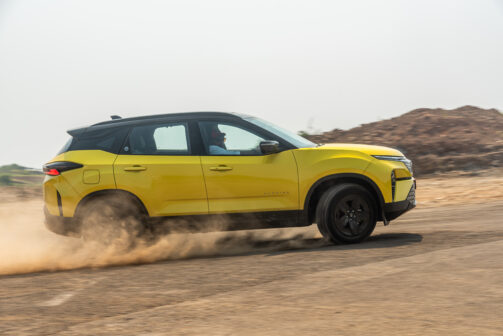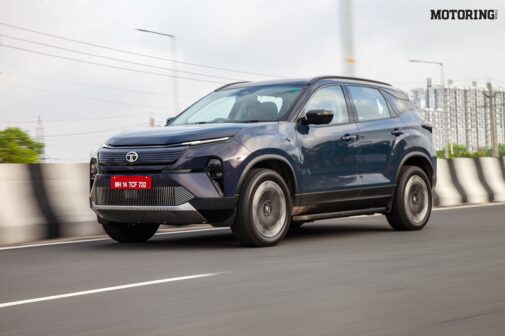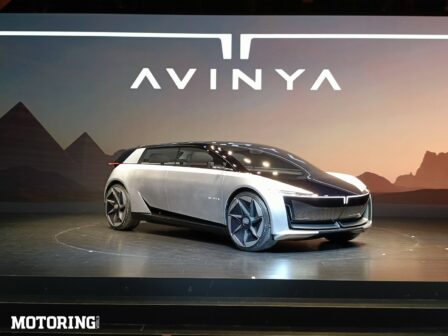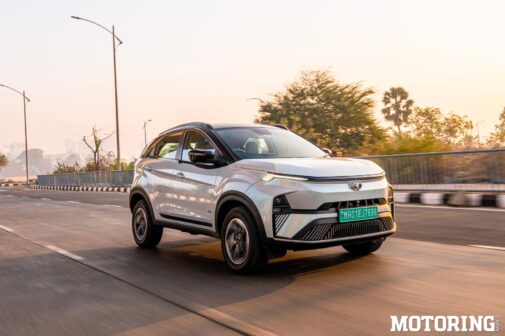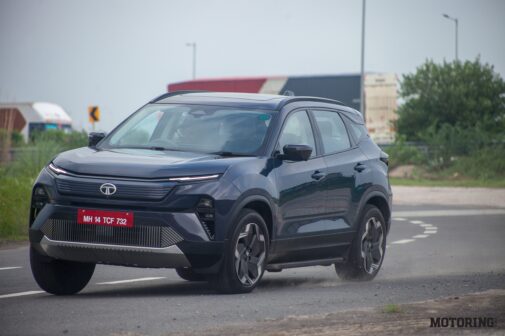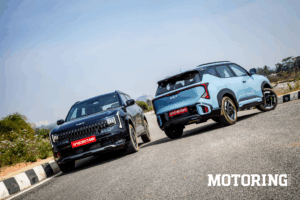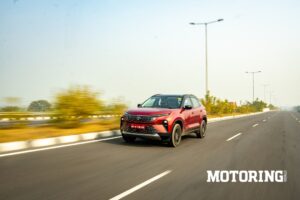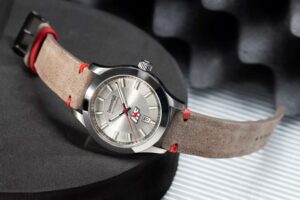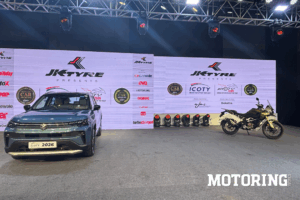Tata Motors’ latest colour strategy goes beyond paint—it taps into culture, climate, and emotion, reshaping how buyers in India choose their cars.
In this conversation, we explore why certain hues dominate, how EV customers are breaking tradition, and what the future of personalisation looks like.
Motoring World: Data shows white dominates Indian car sales, but which unexpected colours are gaining traction in Tier 2/3 markets?
Vivek Srivatsa: White continues to dominate across India, accounting for around 45% of Tata Motors’ sales. This trend holds strong in Tier 2 and Tier 3 markets as well, underlining white’s wide appeal—it is not just a colour of choice but also one of logic. In a country where dust and heat are practical concerns, white remains unmatched in functionality. It reflects heat, hides dust better, and carries cultural significance across several regions as a symbol of purity and simplicity.
What’s particularly interesting, however, is the rise of more expressive choices in certain regional and consumer pockets—even within these smaller towns. Daytona Grey, for example, now makes up 32% of sales and is fast becoming a preferred pick in semi-urban markets. Its premium metallic sheen and subtle sophistication resonate with aspirational buyers looking to signal modernity and progressiveness, without veering into flashiness.
Meanwhile, we’re seeing strong emotional alignment with colours like Red and Blue in culturally vibrant belts. Red is picking up pace in regions like West Bengal and Karnataka—regions with deep celebratory traditions—while Blue has gained surprising traction in Tamil Nadu. These signals show that while Tier 2/3 markets were once driven solely by practicality, they are now balancing function with emotional and cultural expression. Consumers are more informed, expressive, and design-conscious—and that reflects clearly in their colour preferences.
MW: How do EV buyers’ colour preferences differ from ICE customers in Tata’s portfolio?
VS: Our EV customers represent a unique mindset—early adopters, tech-forward individuals who view their vehicle not just as transportation but as an extension of their identity and values. This behavioural difference clearly reflects in their colour choices as well. We’ve noticed that EV buyers gravitate toward distinctive hues that reflect innovation, modernity, and sustainability. A great example is Evo Teal, which has emerged as an iconic identifier for Tata.ev vehicles. It’s a colour that doesn’t just stand out on the road, but also signals a conscious choice—of going electric, going future-ready.
On the other hand, ICE buyers tend to be more rooted in traditional choices—white, grey, and black—colours that are perceived as timeless, durable, and versatile. These customers often prioritize practical aspects such as resale value, dust visibility, and ease of maintenance. The divergence is stark: EV buyers embrace boldness and individuality, often choosing colours that feel futuristic and high-tech, while ICE customers continue to rely on the reassurance of proven classics. We take these insights seriously—our colour offerings and marketing cues are now consciously split to reflect the values and aspirations of these two distinct customer groups.
Do southern states really prefer brighter hues, or is that a myth? Share one surprising regional insight.
It’s not a myth—there’s a genuine and culturally rooted preference for brighter, more vibrant colours in parts of South India. Our data shows that in Karnataka and Kerala, red has surpassed black to become the third most preferred colour among Tata buyers. This isn’t merely a coincidence; red holds deep cultural relevance in these states—symbolizing celebration, prosperity, and auspiciousness. From weddings to festivals, red is omnipresent in South Indian life, and it makes sense that this affinity translates into car purchases as well.
What’s even more fascinating is the case of Tamil Nadu, where blue overtakes black as the third most chosen colour. Blue, traditionally associated with calmness, divinity, and trust, is an integral part of Tamil iconography. This choice reflects a deeper emotional connect that goes beyond aesthetics or trend—it’s about cultural continuity.
In contrast, northern states—being significantly warmer—tend to prefer lighter shades, which not only reflect heat better but are also perceived as more practical for everyday use. This climatic influence, layered over local aesthetic preferences, shapes buying patterns in meaningful ways.
So, while white and grey may unify the country, it is these regional nuances that truly reflect India’s diverse colour psychology. And for us at Tata Motors, understanding and respecting this diversity is critical. It shapes not just what colours we offer in each region, but how we market them, how we display them in showrooms, and how we position our campaigns.
MW: How does Tata balance global colour trends with India’s cultural associations (e.g., red = auspicious)?
VS: Navigating this duality is both a challenge and a tremendous opportunity. On the one hand, we are deeply attuned to global design trends—minimalism, sophistication, and monochromatic palettes, which are increasingly popular among urban consumers. That’s why you’ll see colours like Daytona Grey and Cosmic Gold gaining momentum across our portfolio—they are aligned with a global, urban aesthetic.
On the other hand, India is a country with layers of cultural symbolism attached to colour. Red is not just a colour—it’s considered auspicious. Blue stands for calm and divinity. Gold evokes luxury and tradition. At Tata Motors, we strive to harmonize these elements rather than choose one over the other.
Our approach is two-fold. First, we offer a universal palette that appeals across geographies—safe, aspirational, and premium colours that have global relevance. Then, we regionalize and localize—bringing in pops of culturally resonant colours and configuring our showroom displays, marketing visuals, and dealer communications to reflect regional preferences.
A recent example is the launch of the Harrier.ev, where, we introduced the ‘Nainital Nocturne’ shade—an evocative, deep hue inspired by the serene charm of the hill town. Such strategies allows us to remain trend-forward while staying rooted in India’s diverse and vibrant cultural landscape. These choices or colour stories are designed not only to appeal visually, but also to ignite emotion—giving people a sense of wanderlust, an urge to take the wheel and explore the beautiful corners of our country, sparking a deeper emotional connection with the brand, encouraging the growing passion for road travel in India. To summarise, by weaving cultural significance into contemporary colour palettes, we ensure our cars don’t just look global, but feel personal.
This strategy allows us to deliver a sense of individuality to customers without diluting the overall design language. It’s about respecting tradition while staying contemporary—something we believe Indian customers deeply value.
MW: With Nexon’s dual-tone success, will Tata offer more ‘made-to-order’ colour options?
Our experience with dual-tone editions has been exceptional, clearly highlighting the growing consumer appetite for personalisation. What initially began as a design-led variant has now evolved into a strong market signal—today’s buyers want their vehicles to reflect their individuality. Features like dual-tone roofs, contrast-colour mirrors, and blacked-out finishes are no longer niche—they’ve entered the mainstream and are fast becoming expected options, especially in urban and younger buyer segments. Recognising this shift, we are actively investing in expanding our personalisation capabilities. While full “made-to-order” customisation across the entire portfolio requires greater manufacturing agility, we are exploring broader options. Customers can look forward to more colour combinations, custom graphic packages, and potentially even tri-tone configurations in the near future.
It’s an exciting direction that aligns closely with the evolving aspirations of Indian car buyers, who are now seeking more than just performance—they want a vehicle that’s a true extension of their personality.
MW: Your AR colour configurator is clever—have customers experimented with wilder shades virtually than they’d buy IRL?
The AR colour configurator was designed to bridge imagination and reality—to give customers the freedom to explore without commitment. And the behaviour we’re seeing aligns perfectly with that vision. Customers do experiment with bold, unconventional shades in the virtual environment—emeralds, oranges, deep purples, contrast trims. While they often revert to more neutral or dual-tone options for their final purchase, the tool plays a crucial role in the decision-making journey. It builds confidence, offers clarity on proportions and colour placement, and sparks aspiration.
Moreover, it’s allowing us to gather invaluable behavioural data on what customers are curious about—even if they’re not yet ready to commit. This feedback loop is helping us fine-tune future colour strategies and consider bold ideas that might have seemed too risky in the past.
It’s a classic case of technology not just enhancing experience, but expanding the boundaries of consumer imagination—and for us, that’s a powerful step forward.
Why Some Colours Trend—and Others Don’t
Function & Maintenance: White hides dust and reflects heat—critical in India’s climate and road conditions. Daytona Grey balances urban chic with practicality.
Aspirational Appeal: Black signifies luxury and professionalism. Matte finishes (Dark/Stealth) cater to premium SUV buyers wanting standout but subtle style.
Cultural Connection: Colours like red and blue resonate regionally due to festivals, traditions, and temple aesthetics—making them more emotionally appealing than neutrals in some markets.
Tech Identity in EVs: Uncommon EV-exclusive hues like Evo Teal broadcast innovation and sustainability, aligning with the ethos of early adopters.
MW: If you could special-order any Tata model in a custom shade, what would it be—and why?
Harrier.ev STEALTH. The STEALTH Edition isn’t just an SUV—it’s a bold expression of capability and refined design. With its distinctive presence and elevated features, it offers a unique blend of power, sophistication, and desirability that will resonate with true enthusiasts.











